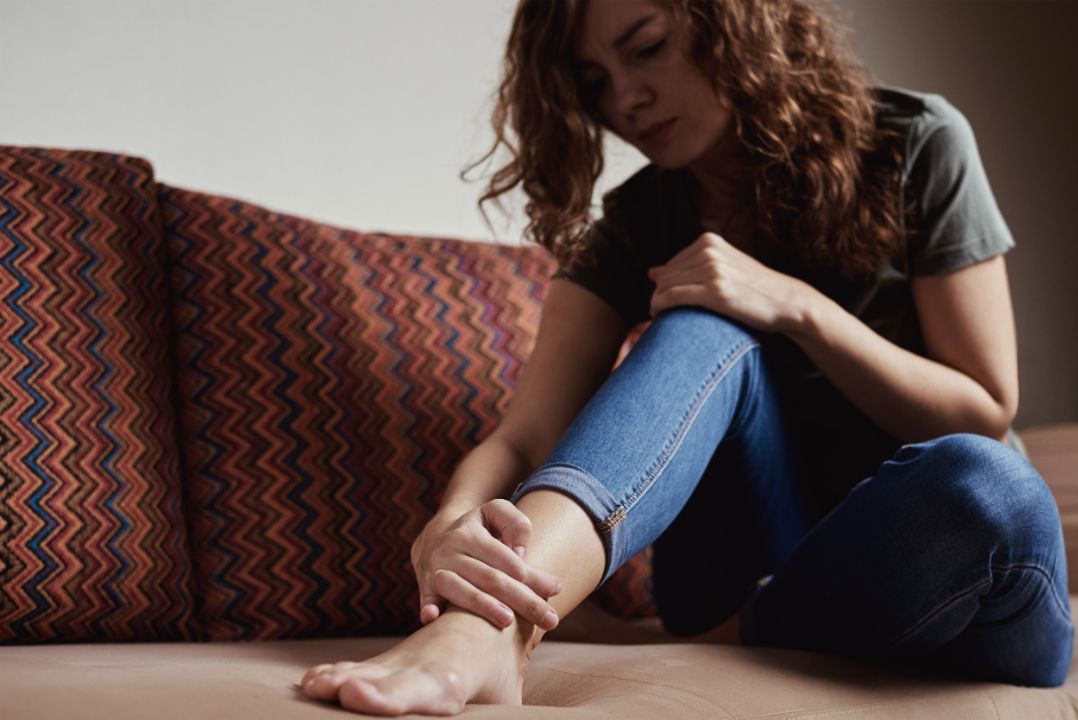Leg pain can be a common complaint for many individuals, ranging from occasional discomfort to debilitating pain. It can be caused by a variety of factors, including muscle strain, injury, or underlying medical conditions. It is essential to understand the causes and symptoms of leg pain to manage it effectively and prevent it from worsening.

Photo Credit: Lazy_Bear, Envato
Leg pain can be caused by a variety of factors, ranging from minor muscle strain to more serious medical conditions. Understanding the common causes and symptoms of leg pain can help you identify the root cause of your discomfort and seek appropriate treatment.
If you are experiencing leg pain, it is important to consult a healthcare professional to receive an accurate diagnosis and appropriate treatment plan. In the next section, we will discuss when it is necessary to seek medical help for leg pain.
While some cases of leg pain can be resolved with self-care or over-the-counter remedies, it is important to know when to seek medical attention. Delaying treatment for certain underlying conditions can lead to worsening symptoms and complications.
If you experience any of the following symptoms along with leg pain, it is recommended to seek medical attention immediately:
Additionally, if your leg pain is persistent or recurrent, it is advisable to see a healthcare provider for a proper diagnosis and treatment plan.
If you are experiencing leg pain, there are several home remedies and self-care tips you can try before seeking professional medical help. These remedies and tips can help alleviate discomfort and reduce the severity and frequency of leg pain episodes.
Applying heat or cold to the affected area can help relax muscles and reduce inflammation and pain. A warm compress or heating pad can help improve blood flow and alleviate muscle tension, while a cold compress or ice pack can help reduce swelling and numb pain. Try applying heat or cold for 15-20 minutes at a time, several times a day as needed.
Gentle stretching exercises can help improve flexibility and reduce muscle tension. Try stretching the affected leg slowly and gradually, holding each stretch for about 30 seconds. Repeat each stretch several times a day.

Photo Credit: debbalba, Envato
Over-the-counter pain relievers such as acetaminophen, ibuprofen, and naproxen can help alleviate mild to moderate leg pain. Follow the recommended dosage instructions carefully and consult with a healthcare professional before taking any new medication.
Poor posture and body mechanics can contribute to leg pain. Make sure to stand and sit up straight, avoid crossing your legs for long periods of time, and wear comfortable, supportive shoes that fit well and provide adequate cushioning for the soles of your feet.
Self-massage or acupressure can help release tension and reduce pain in the affected leg. Use your fingers to apply gentle pressure to the affected area, moving slowly and steadily. Avoid putting pressure on any injured or swollen areas and stop if you experience any discomfort or pain.
If you are experiencing swelling or inflammation in the affected leg, try elevating it on a pillow or cushion. This can help improve blood flow and reduce swelling and discomfort.
If self-care measures do not effectively relieve leg pain, medical treatment may be necessary. Depending on the underlying cause of the pain, healthcare professionals may recommend a variety of interventions. Here are some of the most common:
Physical therapy is often recommended for muscle strains or injuries that cause pain in the legs. A trained professional can guide patients through exercises that stretch and strengthen the affected muscles, promoting healing and reducing discomfort. Physical therapy can also improve overall leg function and prevent future injury.
Patients experiencing severe or chronic leg pain may benefit from medications such as nonsteroidal anti-inflammatory drugs (NSAIDs), acetaminophen, or prescription pain relievers. Depending on the specific condition causing the pain, medication may be administered orally, topically, or via injection.
In some cases, surgery may be necessary to treat the underlying condition causing leg pain. For instance, knee or hip replacement surgery may be recommended for patients experiencing arthritis-related pain. Similarly, surgical intervention may be necessary to repair a torn ligament or tendon that is causing discomfort.
It is important to note that each of these interventions comes with potential risks and benefits. Patients should consult with a healthcare professional to determine the most appropriate course of action for their specific condition.
Leg pain can be uncomfortable and limit your mobility. Thankfully, there are preventative measures you can take to maintain the health of your legs and reduce the likelihood of experiencing pain. Here are some tips:
Excess weight places additional strain on your legs, which can lead to pain and discomfort. Maintaining a healthy weight through a balanced diet and regular exercise can alleviate this burden and reduce your risk of developing leg pain.

Photo Credit: Zinkevych_D, Envato
Physical activity promotes good circulation and strengthens the muscles in your legs, helping to prevent pain and injury. Aim for at least 30 minutes of moderate exercise most days of the week, such as walking, cycling, or swimming.
Wearing shoes with good arch support and cushioning can help distribute pressure evenly across your feet and legs, reducing the risk of pain and injury. If you have a job that requires standing for long periods, consider investing in comfortable, supportive shoes or adding insoles to your existing footwear.
Overexertion can lead to muscle strain and injury, which can cause leg pain. If you engage in activities that require a lot of physical exertion, such as running or lifting heavy weights, be sure to warm up first, pace yourself, and take breaks as needed.
Stretching before and after physical activity can help improve flexibility and reduce muscle tension, which can alleviate pain and prevent injury. Incorporate stretching exercises into your daily routine, such as calf stretches or hamstring stretches.
By following these tips, you can maintain the health of your legs and reduce your risk of developing pain or injury. However, if you do experience leg pain, it is important to consult with a healthcare professional for an accurate diagnosis and appropriate treatment.
Leg pain can be caused by various factors such as muscle strain, knee pain, leg cramps, shin splints, and underlying health conditions.
Symptoms of leg pain may include discomfort, swelling, numbness, weakness, and difficulty in walking or bearing weight on the affected leg.
It is advisable to seek medical assistance if you experience persistent or severe leg pain, pain accompanied by fever or chills, sudden swelling or discoloration, or if the pain worsens over time.
Yes, there are several self-care measures that can help alleviate leg pain, including applying ice or heat, performing stretching exercises, using over-the-counter pain relievers, and practicing proper posture and body mechanics.